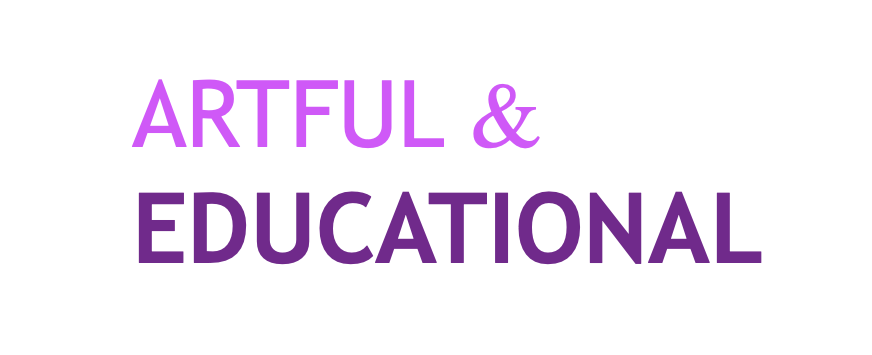Setup for Recording Your Drawing Process
Having a good setup is essential for sharing your drawing process with the world. Let me walk you through some options and simple solutions.
This post contains affiliate links, and I may earn a small commission on any items purchased through the links.
The first step in building your simple, at-home setup for streaming or recording your drawing process is to determine whether you prefer to work on a table, or on an easel. I will outline both approaches below, and you can choose what works best for you. Both of these methods are appropriate for my online students!
Tabletop Method. When I am teaching online, I typically prefer this method for both myself and my students. It allows you to place the artwork directly on the table in front of you, while your camera is affixed to a downward-facing tripod. Many artists find this method to be natural, as tabletop drawing is common. Another benefit of this method is that when it comes time to professionally document your finished artwork, you can use this setup, as long as the artwork fits in your camera’s frame. The most important thing in the Tabletop Method is to set up the paper first, in a position that feels comfortable and natural to you. Then, set up your tripod and camera to face the drawing.
Easel Method. Sometimes, it is better to work on an easel. This allows you to sit or stand upright while working, which can be preferable if you are working for long periods of time or experience strain in your neck and shoulders when looking down at a drawing. This method also has the benefit of allowing you space to step back and see the work from afar. Typically, this method is preferred for painting on canvas. Please note that if you are primarily working on paper and with drawing materials like pencils, pens and markers, you might prefer the Tabletop method.
Whichever method you choose, you will need:
A table or desk
A tripod or camera stand
A DSLR camera or a cell phone with a good camera
Proper studio lighting
Product Recommendations:
Overhead Tabletop Mounts (for the Tabletop method)
High-end: I highly recommend an overhead tabletop mount stand like this one from Glide Gear. It is on the costlier side, but it is sturdy and can handle the weight of your DSLR. If you don’t have a DSLR, you can use your iPhone. (LINK)
Mid-Range: This tabletop mount from Glide Gear is wonderful. Adjust the height, swivel left and right, and enjoy a very sturdy connection to your table —it won’t budge! The downside is that you can’t use a cell phone with this, so it’s DSLR only. (LINK)
Budget-Friendly: This Hemmotop tabletop mount will do the trick. It might not be as sturdy as the other models, but should be adequate for casual use. Use with DSLR or cell phone (LINK)
Cameras (for both the Tabletop and Easel methods)
High-end: I highly recommend this Sony DSLR, but it is expensive and may not be entirely necessary. That said, if you are considering studying art in college, applying to competitive art programs, preparing arts supplements for undergraduate admissions, or applying to exhibitions and residencies, it is a good idea to invest in a great DSLR. I had my first DSLR for 15 years before I replaced it! If you can make the purchase, something like this is well worth it. (LINK)
Mid-Range/Budget: This EMEET webcam will work well for most online lessons. It has a tripod socket, so it should fit nicely with any of the Overhead Tabletop Mount options above. (LINK)
An important note about cameras - please check and make sure you purchase any adapters you may need. For example, the EMEET webcam uses USB, but some newer laptops do not come with a USB port, so you may need to purchase an adapter.
Lighting (for both the Tabletop and Easel methods)
Studio Clamp Lights: You will be able to easily clamp one or two of these to the sides of your table or desk, and properly illuminate your paper so that your drawing appears crisp and clear on your video. Just remember to have a power strip or extension cord nearby, in case if the lights’ cords do not reach an outlet. (LINK)
Bulbs: You will also need to purchase some bulbs. I recommend using 5000K lights whenever possible, as these lights emulate daylight. Please note that for some artists with light sensitivity, this type of light is too intense. In that case, you may consider other color temperatures and maybe a softer or warmer light. (LINK)
Once my tripod and camera are set up, how will I connect my video and share my live drawing online?
One of the easiest ways to share your camera with me during lessons is to use your iPhone to log into the Zoom meeting, then simply place your iPhone into the tripod or tabletop mount. If you are using a DSLR, you will need to connect the camera to your computer, and adjust your Zoom camera settings so that your camera is selected as the video source. Please note that all DSLRs are different, and you will need to troubleshoot how to connect your. camera to the computer ahead of our lesson time.
